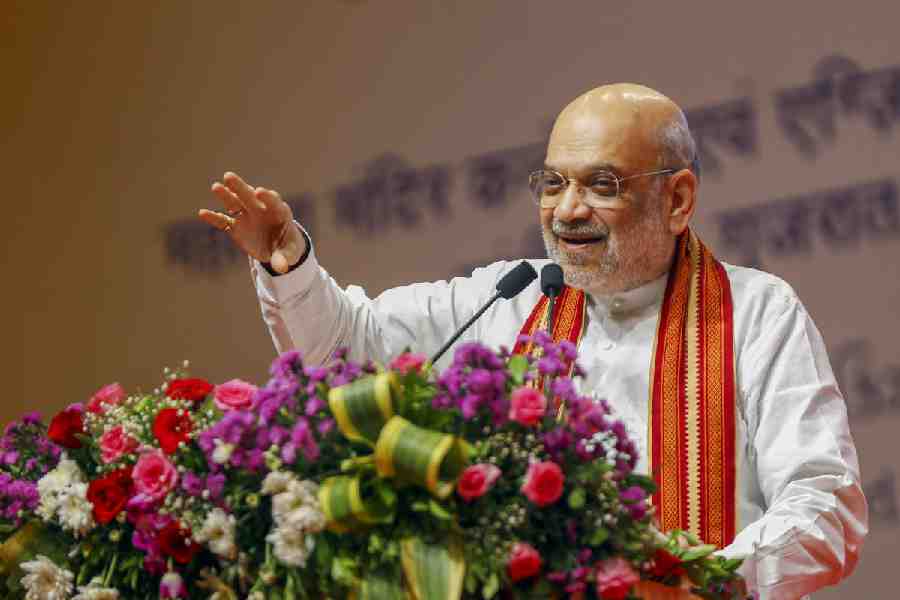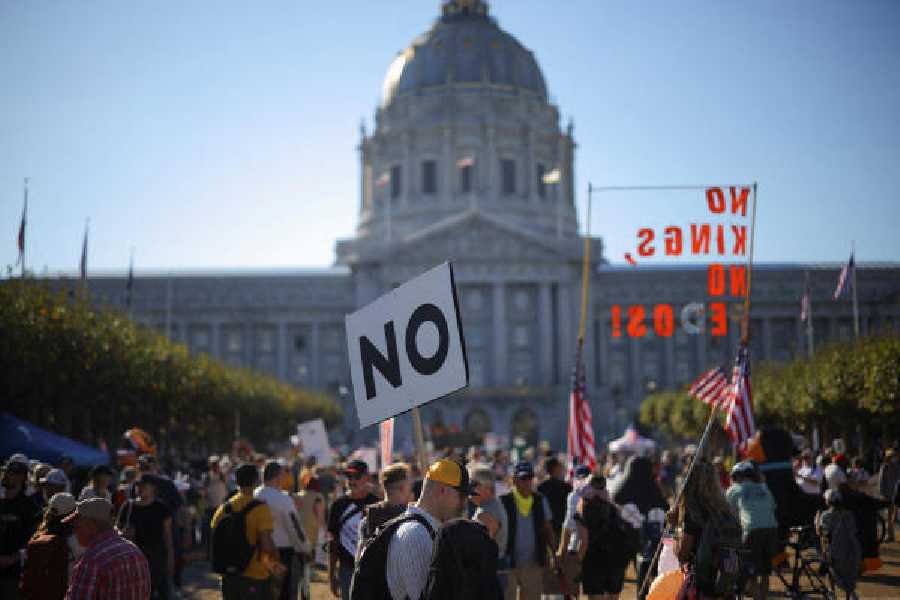Across the road, fire crackers and rallies mark the announcement of a new state. On the fifth floor of a flat opposite Osmania University, a quiet calm prevails. Keshav Rao Jadhav, 81, has seen it all — celebrations and despair, hope and death.
Jadhav still does not believe that the Centre is serious about carving the country's 29th state — Telangana — out of Andhra Pradesh. He, however, has a bowl of seviyan, a popular dessert, to mark the occasion. 'But I am sceptical,' he says.
The retired professor of English at Osmania University — which has been the nerve centre of the Telangana movement — is one of the few surviving leaders who gave shape to the struggle in the Sixties.
Like him, Dr A. Gopala Kishan, a well-known city nephrologist who was one of the founding members of the Telangana Praja Samithi (TPS), the first forum to voice the demand for statehood, is not convinced that the wait is over. 'Such announcements have been made even in the past,' Kishan, 77, stresses.
The cynicism is understandable, for the two have seen a series of highs and lows from the Sixties when the people of Telangana demanded statehood, fearing that they would be left without their identity and development in Andhra Pradesh, while rulers focused their attention on the Andhra region. 'We were humiliated by the people of coastal Andhra for our language, food and clothes,' Jadhav says.
As the state erupts into joyous festivity — and angry agitation — the two are ready to go down memory lane. They flip through the pages of a history that they scripted themselves.
-

Movers and shapers: Keshav Rao Jadhav
Jadhav joined the protests at 14 when he participated in the first Telangana rebellion in the late 1940s as peasants fought against feudal lords and later the State. As a student of Nizam College, he also participated in the Mulki agitation in 1952, when he led protests against government jobs being given to non-Mulkis (non- locals).
In 1953, as Andhra state was carved out of Madras Presidency, the people of Telangana, who did not want to be a part of it, protested. In 1955, the State Reorganisation Commission, formed by the Centre in 1953, said in its report that Telangana should be a separate state and merge with Andhra after the 1961 general elections, if that was the mandate. That didn't happen.
In 1956, a gentlemen's agreement was reached between Andhra and Telangana leaders. Provisions were chalked out for power sharing and promises made to safeguard the interests of Telangana. That didn't happen either.
'None of our interests — relating to health, education, self-governance and sale of agricultural lands — was safeguarded,' says Kishan.
Not surprisingly, there was pent up anger among the youth. A student from Khammam went on a hunger strike after the state government sacked junior engineers of a thermal power project. The protest spread to Osmania, from where students spilled on to the streets.
Kishan recalls an incident that he now deeply regrets. As the rebellion gathered momentum, he instructed four engineering students to burn down the Jamia Osmania railway station in 1969. While attempting to do so, three students sustained burn injuries and later died in hospital.
'I feel guilty now for having sent them to do this. But such was their dedication that they refused to name me when the police interrogated them,' Kishan recalls.
That was the year 'Jai Telangana' became the slogan of the movement. On May 1, 1969, lakhs of people started a march from Charminar to Raj Bhavan in Hyderabad to submit a memorandum to the Governor demanding statehood. Jadhav and Kishan were among them.
'When we were about to start the march, a 16-year-old girl called Aruna came to us and said she wanted to take part in it. She suddenly shouted 'Jai Telangana' — and that very moment, the police fired at her. She fell to the ground and died,' Jadhav recalls. 'It was she who gave us our slogan. Till then, we had slogans such as 'Long Live Telangana' and 'Telangana zindabad'.'
It was the first time police had fired at protesters. But not the last.
The marchers walked on, some throwing stones at the police. A student leader called Umender tried to pacify the agitating crowd. 'But the police fired at him and he died on the spot,' Kishan remembers.
Those were turbulent times, when street protests accompanied public discussions. The TPS organised the first ever convention on Telangana in Hyderabad. It was here that the Telangana flag was hoisted for the first time.
-

Dr A. Gopala Kishan
As killings and curfew continued, the Centre got into the act. In the middle of the night of June 4, 1969, then Prime Minister Indira Gandhi landed in Hyderabad and met Kishan and other Telangana leaders. 'She told me, 'Stop the killing, your issue is solved.' Hearing this, we thought we'd got statehood,' Kishan recalls.
But nothing changed. Some 369 people were killed in police firing in 1969. Leaders including Kishan and Jadhav were arrested.
Jadhav believes that the biggest problem with the movement was that politicians took the credit for it. 'They took advantage of the movement and fulfilled their political aspirations,' he says. He also criticises Telangana Rashtra Samithi chief K. Chandrashekhar Rao's alliance with the Congress in 2004 and the proposed merger with the party.
Kishan agrees. 'The biggest weakness of the movement is that we allowed these politicians to lead it. We never got a selfless leader.'
The 1969 struggle died down after the Jai Andhra movement gathered momentum in 1972 as a counter to the Telangana demand. There were sporadic protests in the 1980s, but the Telangana movement lost its zeal. Kishan and Jadhav took a backseat. Telangana got a new lease of life only when Rao formed the Telangana Rashtra Samithi in 2001.
Kishan, who kept away from the movement for more than four decades, doesn't like some of the turns it has taken. 'Earlier, protesters were killed in police firing. But now they immolate themselves. This clearly shows how leaderless the movement is,' he says. Kishan adds that 700 protesters in the past three years died of burn injuries after self-immolation.
Jadhav is critical of the money that has been coming in. 'It's shocking to see how crores of rupees have been collected from the Telangana diaspora by politicians to keep the movement alive. Money was never important in our protests back then.'
The two veterans look at the struggle from a distance, and wonder if their dream has finally been realised. Till the state takes shape, celebration will be just a bowl of seviyan.
The Telangana Trail
-

The founding members of TPS with Gopala Kishan on the extreme right
1946-51
Armed peasants of Telangana region fight against revenue collectors
1952
Telangana students agitate against 'outsiders'
Potti Sriramulu dies after a fast unto death demanding an Andhra state
1953
Andhra state is created
1969
Khammam student goes on hunger strike, Osmania University students agitate demanding Telangana. Telangana Praja Samithi formed
Many killed in police firing as agitations continue
1973
A political settlement is reached with the Centre, but nothing emerges
2001
K. Chandrashekhar Rao revives the Telangana movement
2009
P. Chidambaram announces in Parliament that Telangana state process has started
2013
Telangana announced












